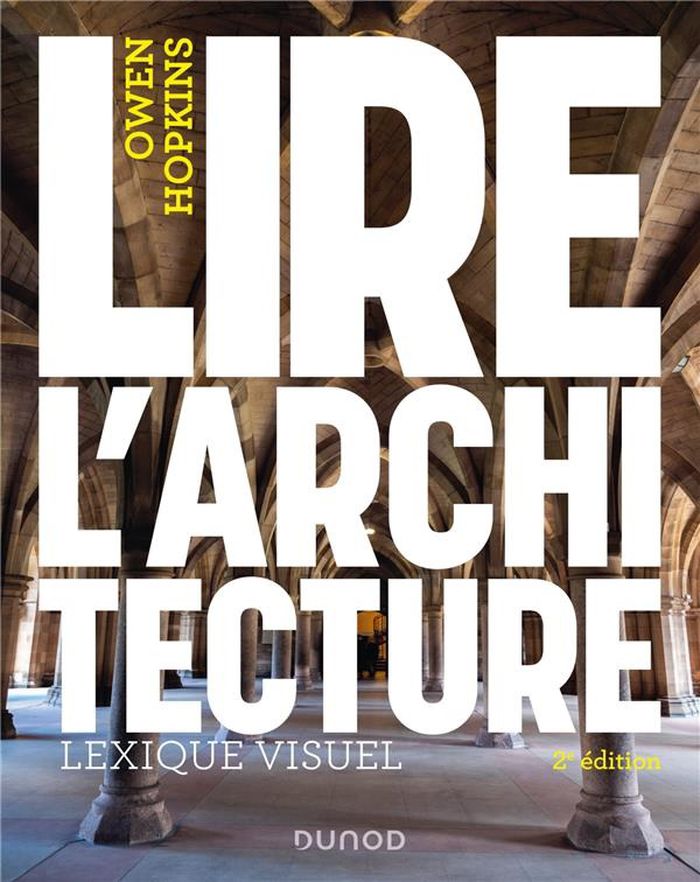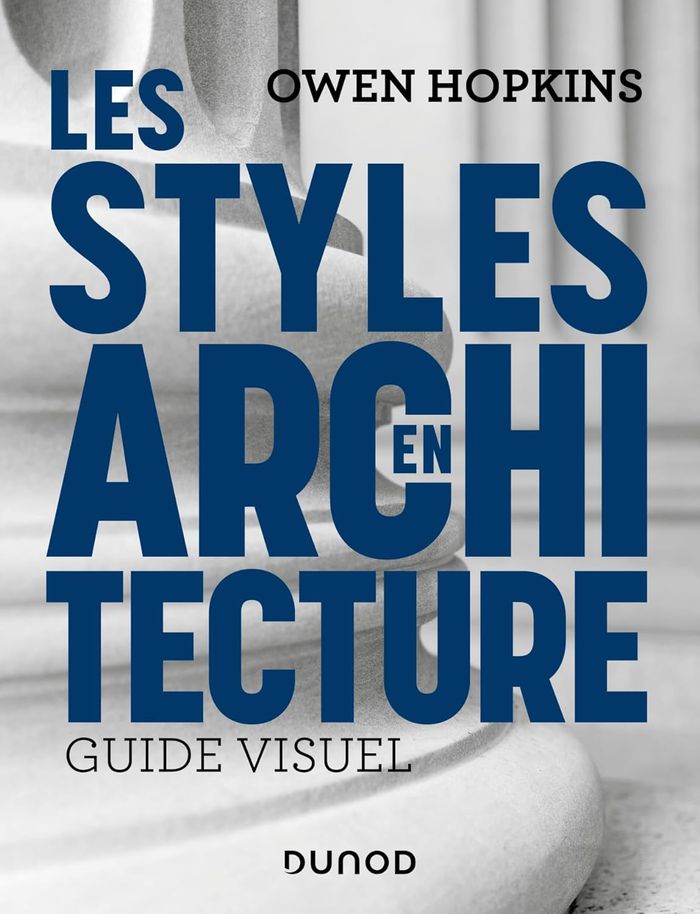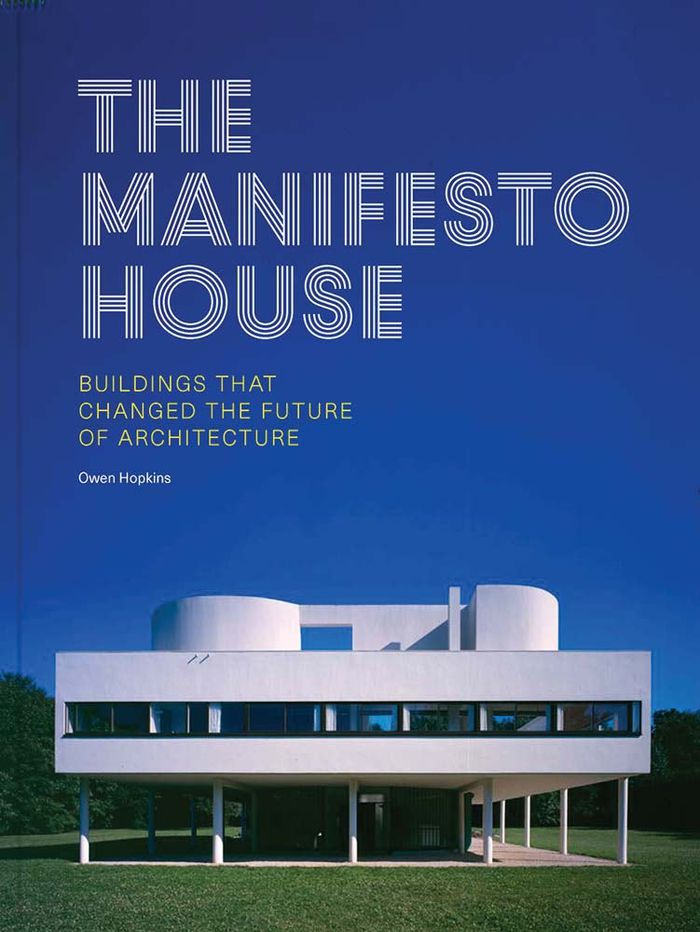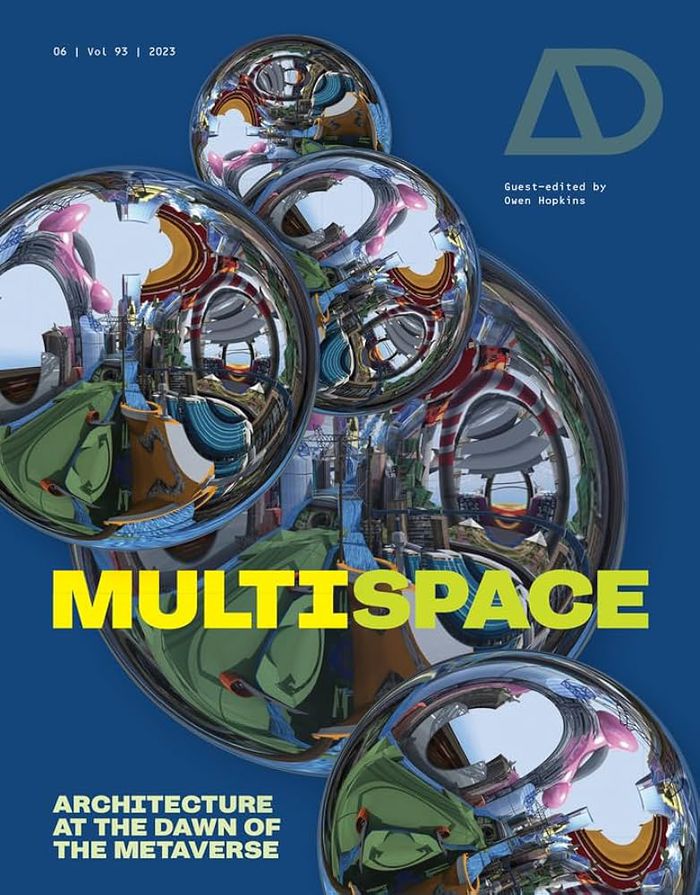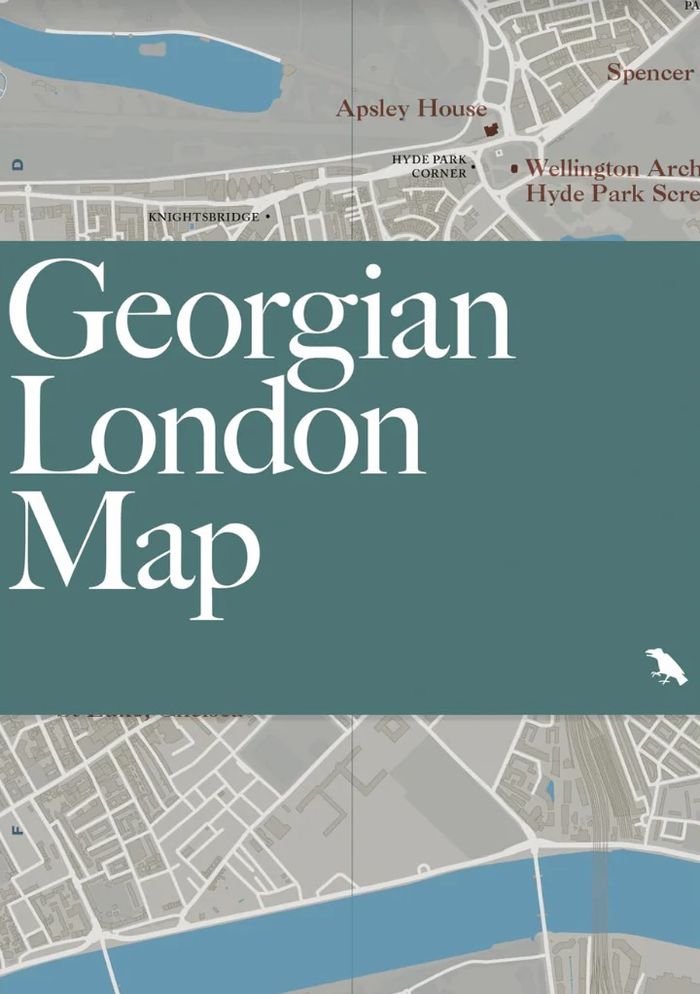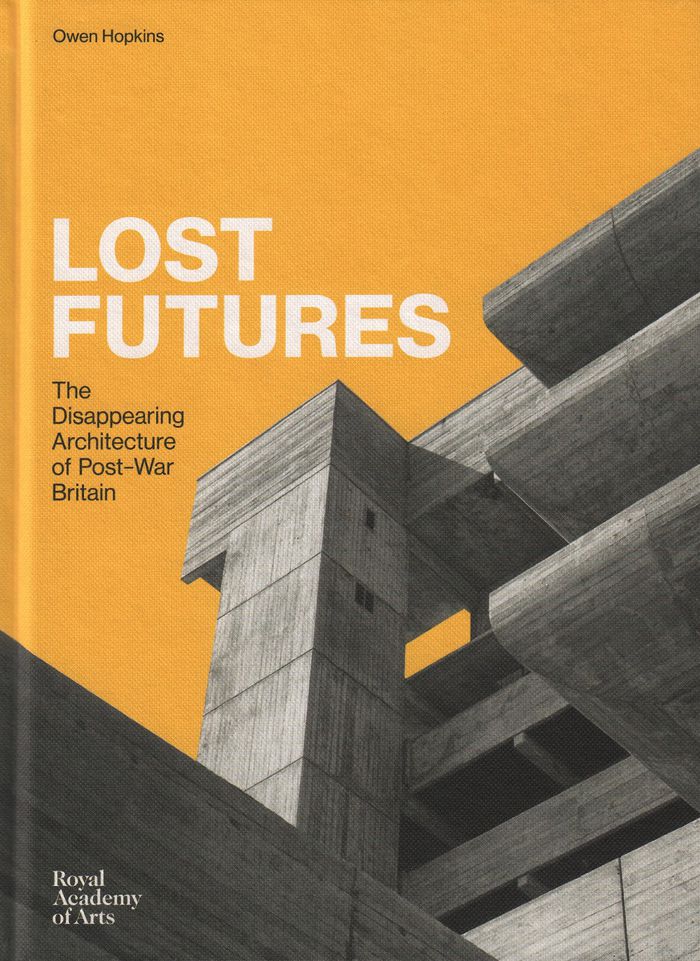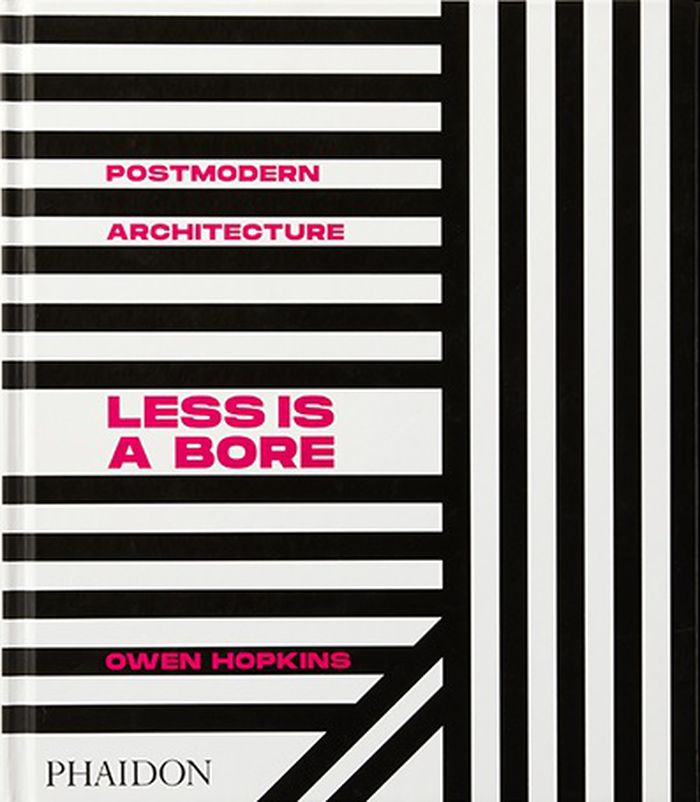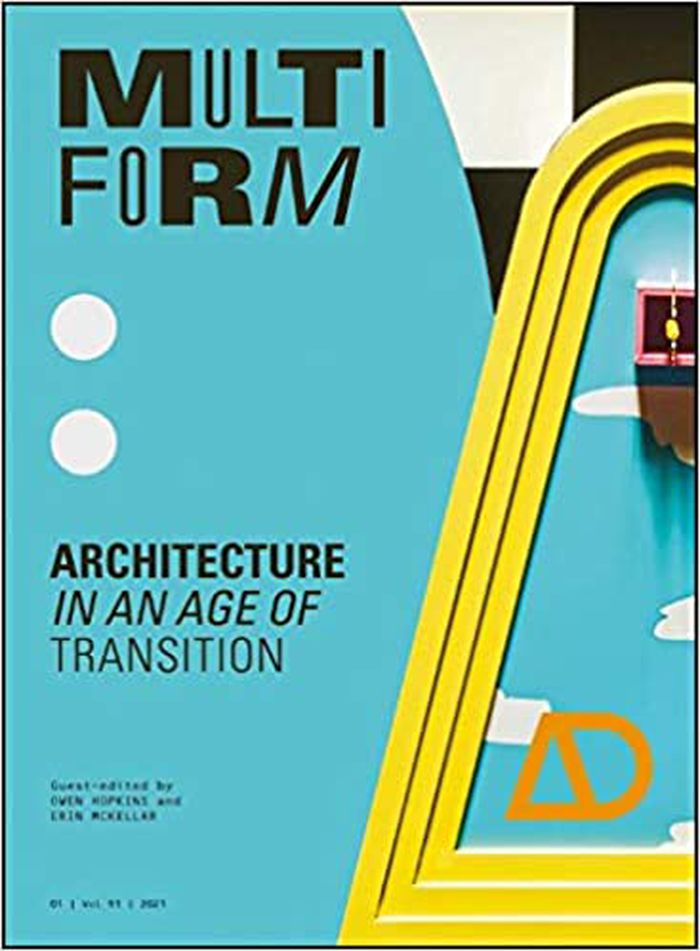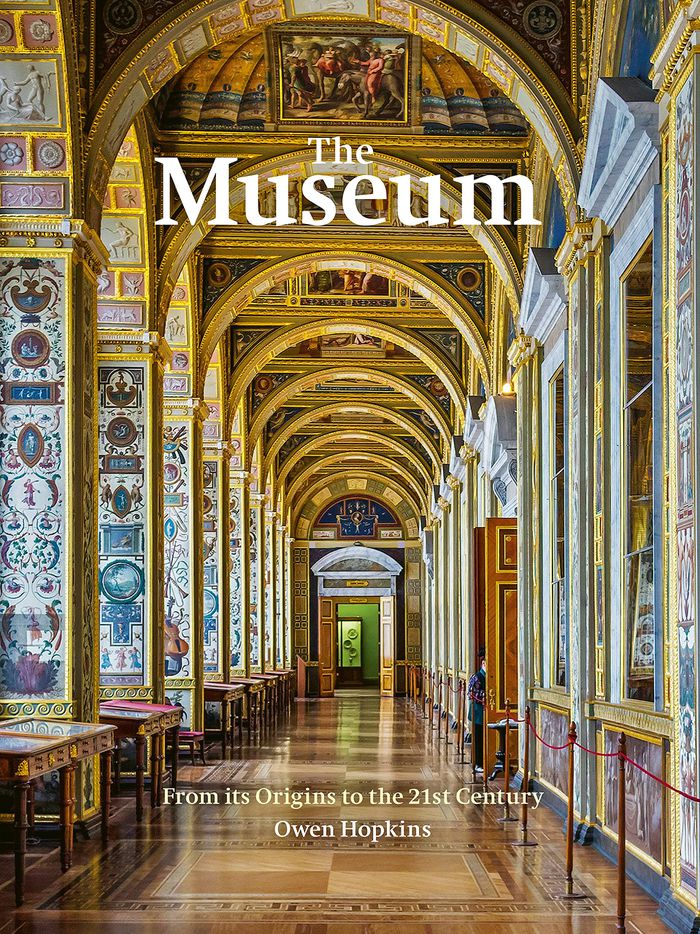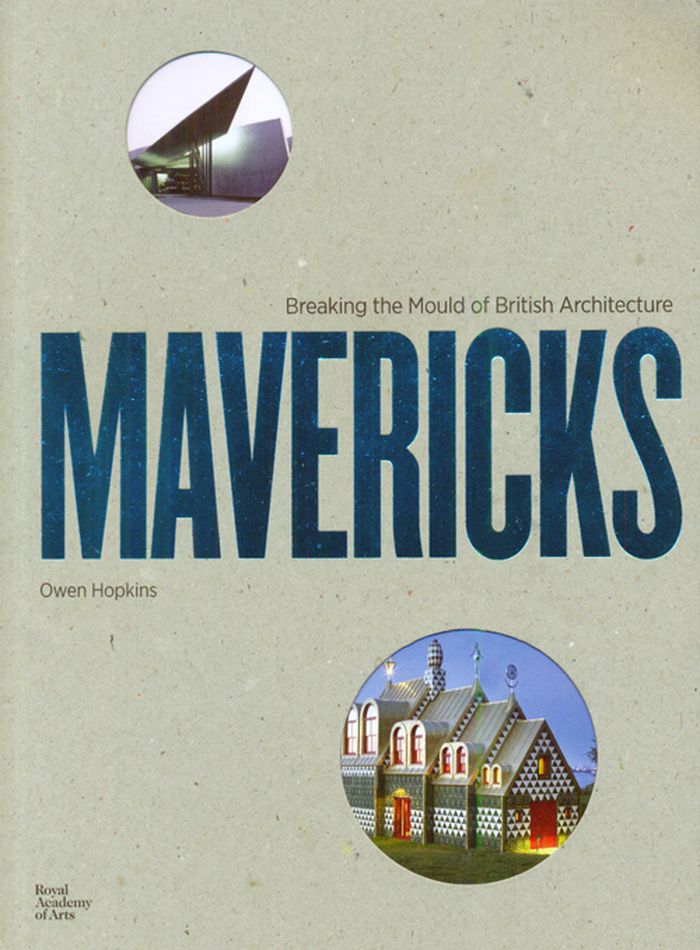$47.95
(disponible sur commande)
Résumé:
Né d’une démarche originale, ce lexique visuel vous permettra de découvrir, de comprendre et d’apprécier les bâtiments qui nous entourent. Cette nouvelle édition est enrichie des dernières innovations architecturales. Des photographies couleur et des dessins annotés illustrent et détaillent chaque type d’édifice, leurs structures, leurs matériaux et leurs détails(...)
janvier 2023
Lire l'architecture : lexique visuel 2e éd.
Actions:
Prix:
$47.95
(disponible sur commande)
Résumé:
Né d’une démarche originale, ce lexique visuel vous permettra de découvrir, de comprendre et d’apprécier les bâtiments qui nous entourent. Cette nouvelle édition est enrichie des dernières innovations architecturales. Des photographies couleur et des dessins annotés illustrent et détaillent chaque type d’édifice, leurs structures, leurs matériaux et leurs détails architecturaux. Tous les grands types et styles de bâtiments sont abordés : des cathédrales aux gratte-ciel, de l’Antiquité à l’époque contemporaine. Un glossaire des termes architecturaux essentiels vient compléter l’ouvrage.
$33.95
(disponible en magasin)
Résumé:
Si vous vous êtes déjà demandé comment reconnaître au premier coup d'oeil le style d'un bâtiment ou ce qui distingue le gothique rayonnant du gothique flamboyant, ce guide visuel est fait pour vous. Avec près de 300 photos, il dresse un panorama des grandes périodes de l'architecture et de leurs styles. Chacun d'eux est défini en fonction de spécificités communes(...)
avril 2024
Les styles en architecture : guide visuel
Actions:
Prix:
$33.95
(disponible en magasin)
Résumé:
Si vous vous êtes déjà demandé comment reconnaître au premier coup d'oeil le style d'un bâtiment ou ce qui distingue le gothique rayonnant du gothique flamboyant, ce guide visuel est fait pour vous. Avec près de 300 photos, il dresse un panorama des grandes périodes de l'architecture et de leurs styles. Chacun d'eux est défini en fonction de spécificités communes (formelles, géographiques, culturelles ou idéologiques) puis identifié grâce à six caractéristiques clés (un certain type de fenêtre ou de moulure décorative, un choix spécifique de matériaux...), toutes illustrées par un édifice emblématique.
$56.00
(disponible en magasin)
Résumé:
Most houses are the product of multiple layers of norms and expectations built up over time, whether methods, materials, and technologies or social, cultural, economic, and political pressures. Yet at various moments houses have been built that break with the past and do something different—houses that stand outside of these expectations and instead are conceived to(...)
The manifesto house: Buildings that changed the future of architecture
Actions:
Prix:
$56.00
(disponible en magasin)
Résumé:
Most houses are the product of multiple layers of norms and expectations built up over time, whether methods, materials, and technologies or social, cultural, economic, and political pressures. Yet at various moments houses have been built that break with the past and do something different—houses that stand outside of these expectations and instead are conceived to embody whole new theories or agendas. We call these "manifesto houses." For the first time, this compelling thread in the history of architecture is surveyed by Owen Hopkins. He brings together a collection of twenty-one such manifesto houses, exploring the visions for architecture conjured by Andrea Palladio, Eileen Gray, Frank Lloyd Wright, Harry Seidler, Lina Bo Bardi, Anupama Kundoo, and Sou Fujimoto, among others. "The manifesto house" looks in detail at the ideas and ambitions embodied in each house, the contexts that shaped them, and their impact and influence on the future of architecture.
Théorie de l’architecture
$54.00
(disponible sur commande)
Résumé:
Multispace exists at the intersection of the physical and digital, and in the blurring of their previously clear dividing lines. Multispace is not a single space, but a hybrid space where, in effect, we occupy multiple spaces simultaneously. We enter it on a Zoom call, when we are in our office and in a meeting with 20 people; when we are cycling down a country lane(...)
AD Multispace: Architecture at the dawn of the metaverse
Actions:
Prix:
$54.00
(disponible sur commande)
Résumé:
Multispace exists at the intersection of the physical and digital, and in the blurring of their previously clear dividing lines. Multispace is not a single space, but a hybrid space where, in effect, we occupy multiple spaces simultaneously. We enter it on a Zoom call, when we are in our office and in a meeting with 20 people; when we are cycling down a country lane whilst racing against thousands of others who also use the Strava app; when we are watching a TV show while live tweeting; or, perhaps most literally, when wandering around the local park looking for creatures that only appear on a smartphone screen. A fundamental question of this AD is why the phenomena that multispace describes are of concern to architects. The answer is that multispace points to a situation that is at root an architectural one. Offering both a collective and highly personalised experience, static and dynamically customisable, and above all at the same time public and private, multispace lies at the centre of a set of tensions, concerns and preoccupations at the core of our conception of architecture as theory and practice. It is the messy space between, with rough and uneven edges that are constantly shifting.
Revues
$18.95
(disponible en magasin)
Résumé:
Celebrate and explore one of London’s iconic architectural eras with "Georgian London Map." Written by scholar and author Owen Hopkins, with original photography by Will Scott, the map identifies a broad variety of 18th and early 19th century buildings and squares embodying Georgian architecture. "Georgian London Map" is our latest title focused on London architecture and(...)
Georgian London Map: Guide to London's Georgian era architecture
Actions:
Prix:
$18.95
(disponible en magasin)
Résumé:
Celebrate and explore one of London’s iconic architectural eras with "Georgian London Map." Written by scholar and author Owen Hopkins, with original photography by Will Scott, the map identifies a broad variety of 18th and early 19th century buildings and squares embodying Georgian architecture. "Georgian London Map" is our latest title focused on London architecture and design, following maps dedicated to the works of Wren and Hawksmoor, and a series of 20th and 21st century guides.
$32.50
(disponible sur commande)
Résumé:
This book casts a detailed look at the wide range of buildings constructed in Britain between 1945 and 1979. Although their bold architectural aspirations reflected the forward-looking social ethos of the postwar era, many of these structures have since been either demolished or altered beyond recognition. In this volume, photographs taken at the time of the buildings’(...)
Lost futures: the disappearing architecture of post-war Britain
Actions:
Prix:
$32.50
(disponible sur commande)
Résumé:
This book casts a detailed look at the wide range of buildings constructed in Britain between 1945 and 1979. Although their bold architectural aspirations reflected the forward-looking social ethos of the postwar era, many of these structures have since been either demolished or altered beyond recognition. In this volume, photographs taken at the time of the buildings’ completion are accompanied by expert research examining their design and creation, the ideals they embodied and the reasons for their eventual destruction.
Brutalisme
$65.00
(disponible sur commande)
Résumé:
This book takes its subtitle from Postmodernist icon Robert Venturi's spirited response to Mies van der Rohe's dictum that ‘less is more'. One of the 20th century's most controversial styles, Postmodernism began in the 1970s, reached a fever pitch of eclectic non-conformity in the 1980s and 90s, and after nearly 40 years is now enjoying a newfound popularity. 'Postmodern(...)
Postmodern architecture: less is a bore
Actions:
Prix:
$65.00
(disponible sur commande)
Résumé:
This book takes its subtitle from Postmodernist icon Robert Venturi's spirited response to Mies van der Rohe's dictum that ‘less is more'. One of the 20th century's most controversial styles, Postmodernism began in the 1970s, reached a fever pitch of eclectic non-conformity in the 1980s and 90s, and after nearly 40 years is now enjoying a newfound popularity. 'Postmodern Architecture' showcases examples of the movement in a rainbow of hues and forms from around the globe.
Post-modernisme
$47.95
(disponible en magasin)
Résumé:
This issue of AD posits that this re-examination and redeployment of postmodernist approaches is the architectural attempt to reflect, grapple with and make sense of the current political and economic situation.
AD: Multiform, Architecture in an age of transition
Actions:
Prix:
$47.95
(disponible en magasin)
Résumé:
This issue of AD posits that this re-examination and redeployment of postmodernist approaches is the architectural attempt to reflect, grapple with and make sense of the current political and economic situation.
Revues
$79.95
(disponible sur commande)
Résumé:
This book is split into six chapters that proceed more or less chronologically. It begins by exploring the origins of the museum both as a cultural phenomenon and as a particular type of space. Central to this, as the first chapter explores, was the ‘princely collection’, that is, collections of painting and sculpture assembled by royalty and the nobility across Europe(...)
The Museum : from its origins to the 21st century
Actions:
Prix:
$79.95
(disponible sur commande)
Résumé:
This book is split into six chapters that proceed more or less chronologically. It begins by exploring the origins of the museum both as a cultural phenomenon and as a particular type of space. Central to this, as the first chapter explores, was the ‘princely collection’, that is, collections of painting and sculpture assembled by royalty and the nobility across Europe that began during the Renaissance and continued during the seventeenth and eighteenth centuries. Although varying both in extent and artistic focus, the motivations driving the establishing of these early collections generally derived from their creators’ desires to fashion learned and enlightened images of themselves and their courts. With some exceptions, admission to these collections was limited to the social elite and those that they were trying to impress. The idea that collections should be open to a wider social group began to emerge during the eighteenth century with the advent of the wunderkammer, or cabinet of curiosities. These contained not just works of art, but all manner of objects, from natural history specimens to religious or cult artefacts, and everything in between.
$23.95
(disponible sur commande)
Résumé:
'Mavericks: Breaking the Mould of British Architecture' explores twelve figures from the history of British architecture, including Sir John Soane, Charles Rennie Mackintosh, Cedric Price and Zaha Hadid who have defied convention over the past 250 years. This book offers a fresh take on their work, establishing new and sometimes surprising historical connections, while(...)
Mavericks: breaking the mould of British Architecture
Actions:
Prix:
$23.95
(disponible sur commande)
Résumé:
'Mavericks: Breaking the Mould of British Architecture' explores twelve figures from the history of British architecture, including Sir John Soane, Charles Rennie Mackintosh, Cedric Price and Zaha Hadid who have defied convention over the past 250 years. This book offers a fresh take on their work, establishing new and sometimes surprising historical connections, while posing an intriguing alternative narrative to the history of British Architecture.
